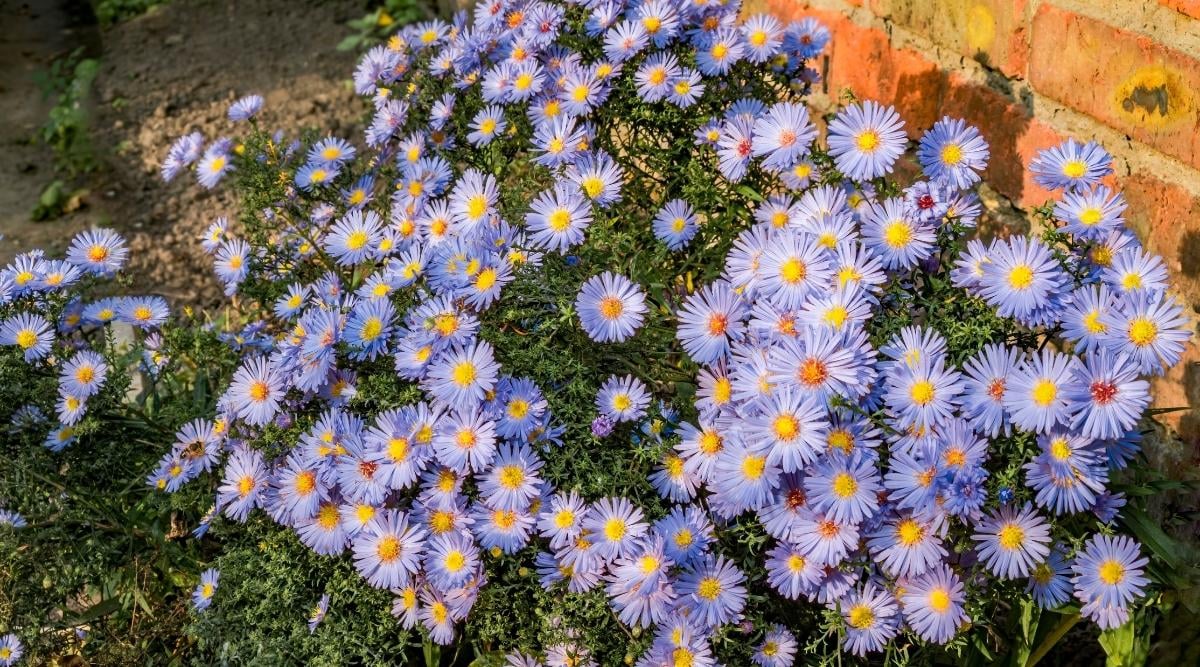madtechventures.com – The Italian Aster (Aster amellus) is a captivating perennial flower known for its vibrant, daisy-like blooms and elegant appearance. Often found gracing late summer and fall gardens, this plant adds a burst of color when many other flowers begin to fade. With its resilience and charm, the Italian Aster is a beloved flower for gardeners and nature enthusiasts alike.
Appearance and Characteristics
The Italian Aster stands out with its striking, star-shaped flowers that come in a variety of colors, including purple, pink, and white, with a contrasting yellow center. These flowers are typically 2 to 3 inches wide and are borne on tall, slender stems, giving the plant a graceful and upright appearance. The foliage consists of narrow, lance-shaped leaves that complement the vibrant flowers and add to the overall aesthetic of the plant.
Blooming from late summer to early fall, Italian Asters are an excellent choice for adding color to gardens as other summer flowers begin to wane. The dense clusters of blooms attract pollinators, such as bees and butterflies, making them not only beautiful but also beneficial for local ecosystems.
Growing Conditions
Native to the Mediterranean region, Italian Asters thrive in sunny locations with well-drained, fertile soil. These flowers are relatively hardy, tolerating a range of soil types, but they perform best in slightly acidic to neutral soil. They require full sun to produce the most vibrant blooms, although they can tolerate some light shade, especially in warmer climates.
Italian Asters are drought-tolerant once established but will appreciate regular watering during dry spells, especially when actively blooming. They prefer consistently moist soil but dislike standing water, which can lead to root rot. To maintain healthy plants, it’s important to ensure that the soil drains well and that they are not exposed to excessive moisture.
Care and Maintenance
Italian Asters are relatively low-maintenance plants, but like any garden flower, they benefit from a little extra attention:
- Pruning: To encourage a bushier growth habit and more blooms, it is helpful to pinch back the plant in early spring. Deadheading spent flowers can also promote further blooming.
- Watering: Regular watering is essential, especially during dry periods. However, ensure that the soil remains well-drained to prevent waterlogging.
- Mulching: Applying mulch around the base of the plant can help retain moisture and keep the roots cool, especially during hot summers.
- Winter Care: In colder climates, Italian Asters may die back in the winter but often reemerge in the spring. Adding a layer of mulch in late fall can help protect the roots from freezing temperatures.
Attracting Pollinators
One of the key reasons for planting Italian Asters is their ability to attract pollinators. The vibrant flowers are particularly appealing to bees, butterflies, and even moths. This makes the plant a great choice for creating a pollinator-friendly garden. By providing nectar late in the growing season, Italian Asters help support these vital creatures as they prepare for cooler months.
Their late blooming period also provides an essential food source for pollinators when many other flowers are no longer in bloom, which is particularly important for sustaining bee populations.
Italian Asters in the Landscape
Italian Asters are versatile and can be used in a variety of landscaping settings. Their upright, bushy growth makes them an excellent choice for adding height to garden beds, borders, and wildflower meadows. They are particularly effective when planted in groups or drifts, where their vibrant colors can create a stunning display.
Additionally, Italian Asters are perfect for mixed perennial gardens, where their late-season blooms can complement other flowers that bloom in spring and summer. Their relatively compact size makes them suitable for smaller gardens, container plantings, or even as a part of a cutting garden.
Conclusion
The Italian Aster is a stunning flower that brings vibrant color and ecological benefits to any garden or landscape. With its elegant blooms, ease of care, and ability to attract pollinators, this perennial is an ideal choice for gardeners looking to add late-season beauty to their spaces. Whether planted in a sunny garden bed, as part of a pollinator garden, or in a container, the Italian Aster is sure to make a lasting impression with its striking colors and graceful presence.
